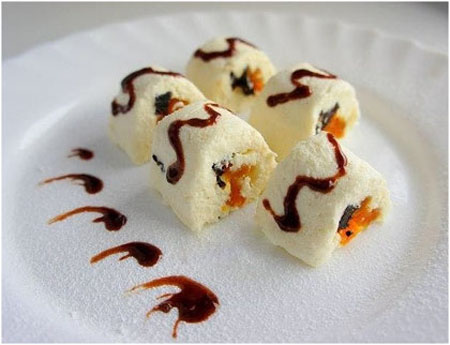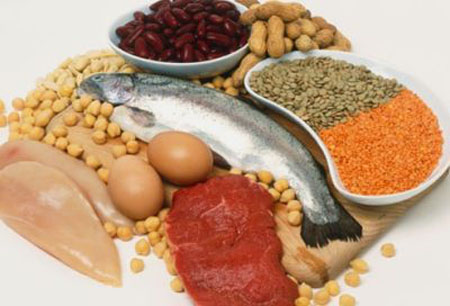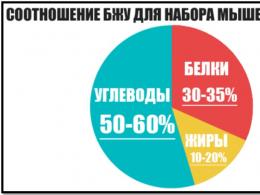Bju and calorie calculation
A competent diet should be designed in such a way that the calculated daily calorie intake is enough to replenish energy, and the ratio of proteins, fats and carbohydrates is optimal. This approach allows you not to feel hungry, provide enough nutrients, not experience lethargy and weakness, and at the same time effectively lose weight. If the goal is not to lose weight, but rather to gain weight or maintain it at a certain level, then BJU nutrition will help achieve these goals.
Calculation of BJU: how to correctly calculate BJU for weight loss
To understand how to calculate BJU for weight loss, first you need to decide on the daily calorie intake. The developed calculation formula is intended for the female body; for men, the coefficients of the formula will be slightly different.
For women: to the coefficient 655, you must add the product of your own weight in kg by 9.6 and the product of height in cm by 1.8. Subtract the product of age and coefficient 4.7 from the resulting number.
For men: the mechanism is the same, but the first number will be only 66, weight multiplied by 13.7, height by 5, age by 6.8.
 BJU for weight loss: calculator
BJU for weight loss: calculator Having performed this simple computational operation, we obtain the daily rate for maintaining the weight at the same level. To calculate the calorie content for weight loss, the result is multiplied by the coefficient of physical activity.
We have identified four main indicators:
- Low activity: sedentary work in the office, rare walks around the city at a slow pace - 1.2;
- Small: exercises in the gym or swimming 1-3 times a week are added to the above - 1.4;
- Average: training from 3 to 5 times a week - 1.6;
- High: almost daily training or high-intensity work - 1.7.
Multiplying your number by one of your lifestyle factors gives you the calories to maintain your current weight. To start losing weight, calculate 80% from the resulting number. To gain weight, you need to increase the calculated number of calories to 120%.
Calculation of BJU: daily norm of proteins, fats and carbohydrates
 Calculation of BJU for weight loss: online calculator
Calculation of BJU for weight loss: online calculator So, the hardest part is over. After doing the necessary calculations, we got the number of calories that we need to consume daily. Let's assume that this number was approximately 2000 kcal.
To calculate proteins, fats, carbohydrates for weight loss, it is necessary to take into account that 1 gram of protein has a calorie content of 4 kcal, carbohydrates have the same calorie content, but for fats it is more than 2 times higher - 9 kcal per 1 gram. The amount of carbohydrates per day should be 40% of the total mass of food consumed, the same amount of proteins, but only 20% of fats.
The formulas for calculating BZHU are as follows:
- Protein calculation: (2000 kcal * 0.4) / 4
- Fat: (2000 kcal * 0.2) / 9
- How to calculate carbohydrates: (2000 kcal * 0.4) / 4
The amounts received are the norm for each substance individually necessary for you. It remains only to choose the right products according to these calculations.

How to choose products according to BJU?
Even if the selected products strictly correspond to your BJU calculations, this is not yet a guarantee of success. All foods in the diet should be selected taking into account their usefulness for the body. After all, our body lacks the optimal amount of proteins, fats and carbohydrates per day. No less important for us are minerals, vitamins, fiber and other useful substances for the timely regeneration and growth of cells, the proper functioning of all body systems. Therefore, when choosing food products according to the BJU system, one should be guided by the principles of a healthy diet.
How to calculate calories and bju in foods and dishes
- Before cooking, weigh the products you need. Then, using tables and a calculator, calculate their total calorie content and BJU.
- After cooking, weigh the finished dish (do not forget to subtract the weight of the pan). Now recalculate for 100 grams of the finished dish. Example: 100 grams of dry buckwheat have a calorie content of 335 kcal. Ready-made porridge weighs 200 grams (the cereal is boiled soft), but its calorie content is still the same 335 kcal. This means that 100 grams of ready-made porridge contains not 335, but only 167.5 kcal. BJU is calculated in exactly the same way.
- For a fried dish, you need to add another 20% to the calorie content - this is the calorie content and the bju of the absorbed oil. Grilled chicken becomes 30% more nutritious, dried fish - 2 times.
- Water and salt have no calories. 20% of what was cooked in it (meat, fish, mushrooms, vegetables) goes into the broth, 30% (fruits) into compote






